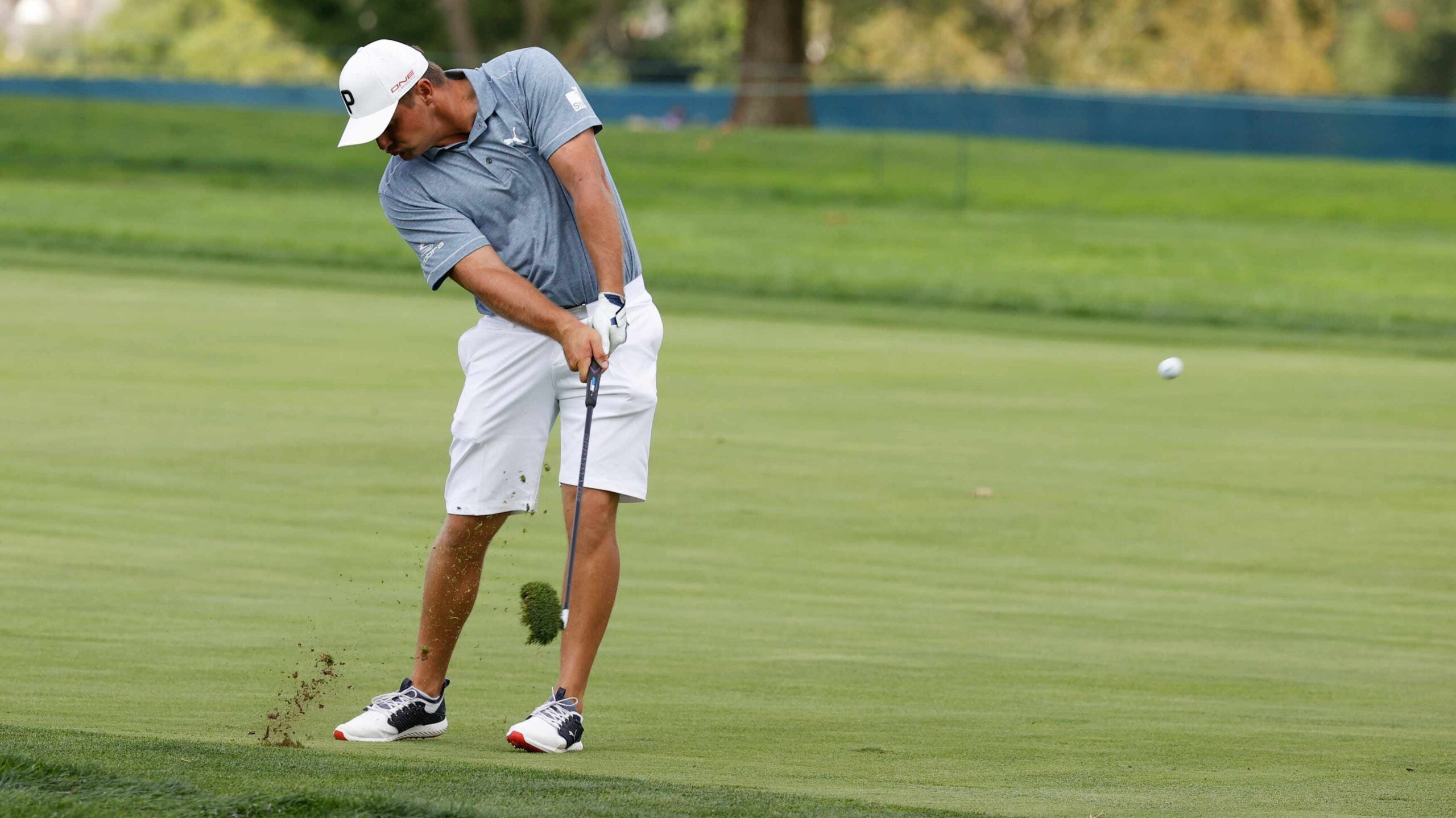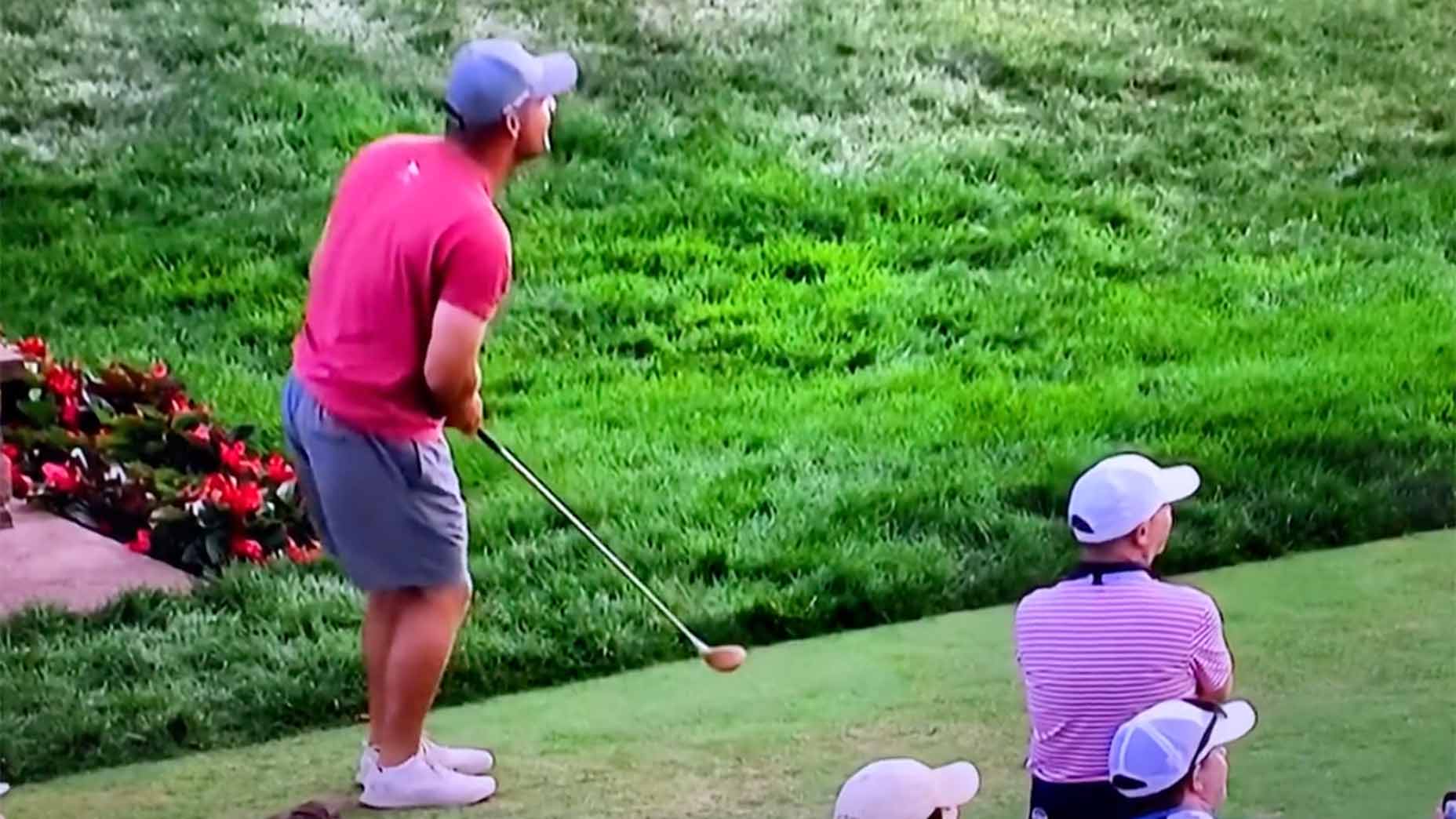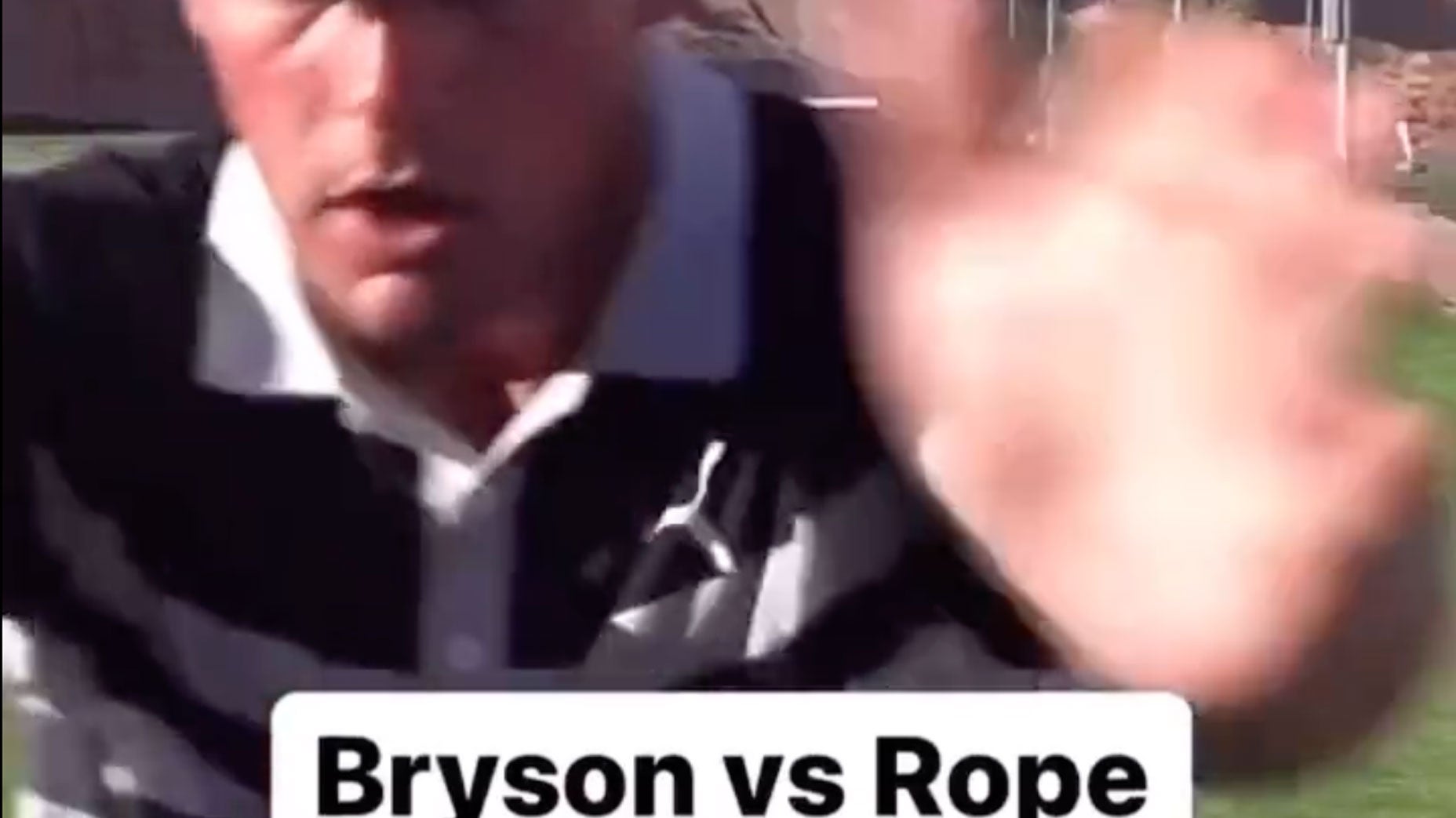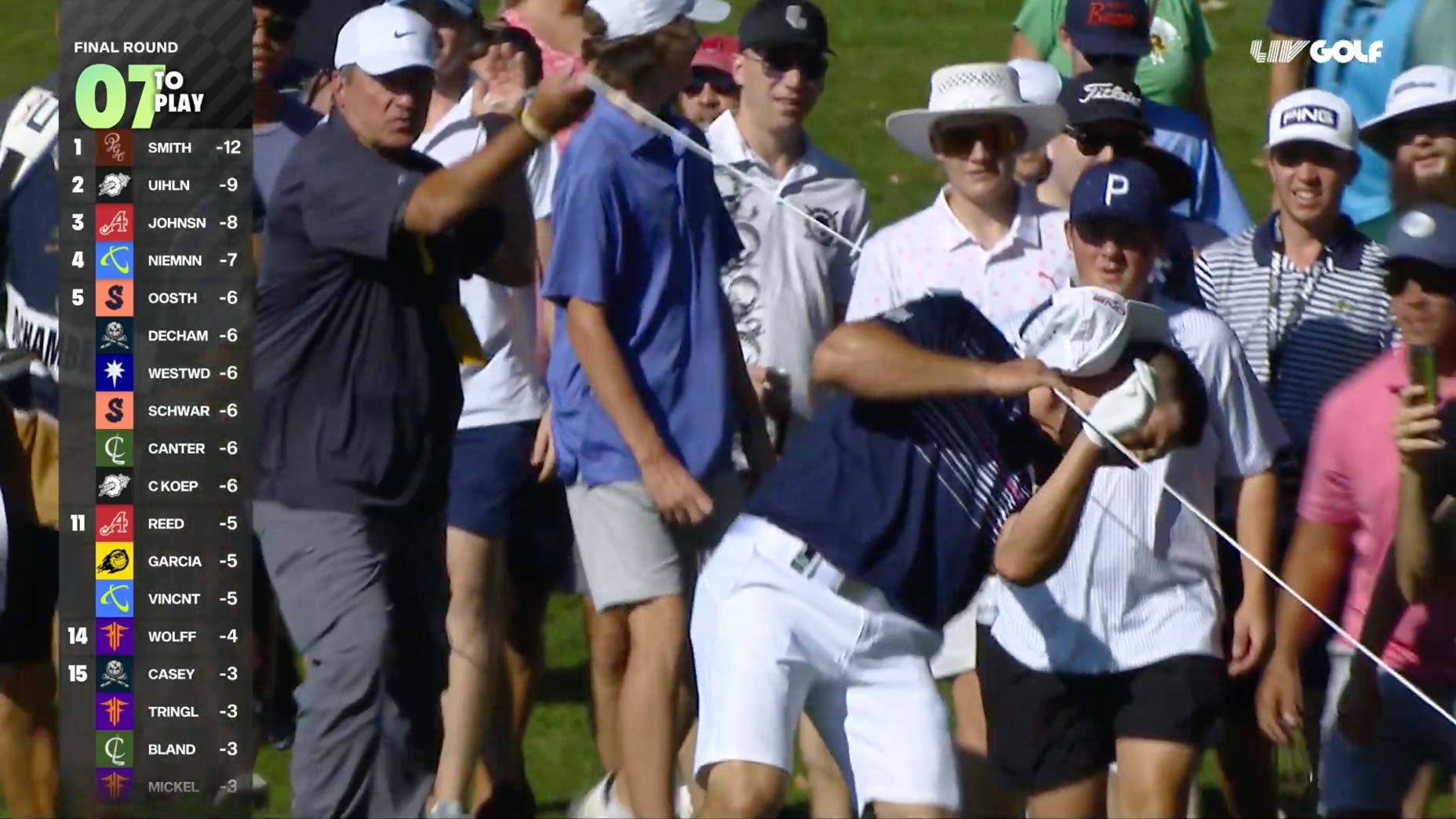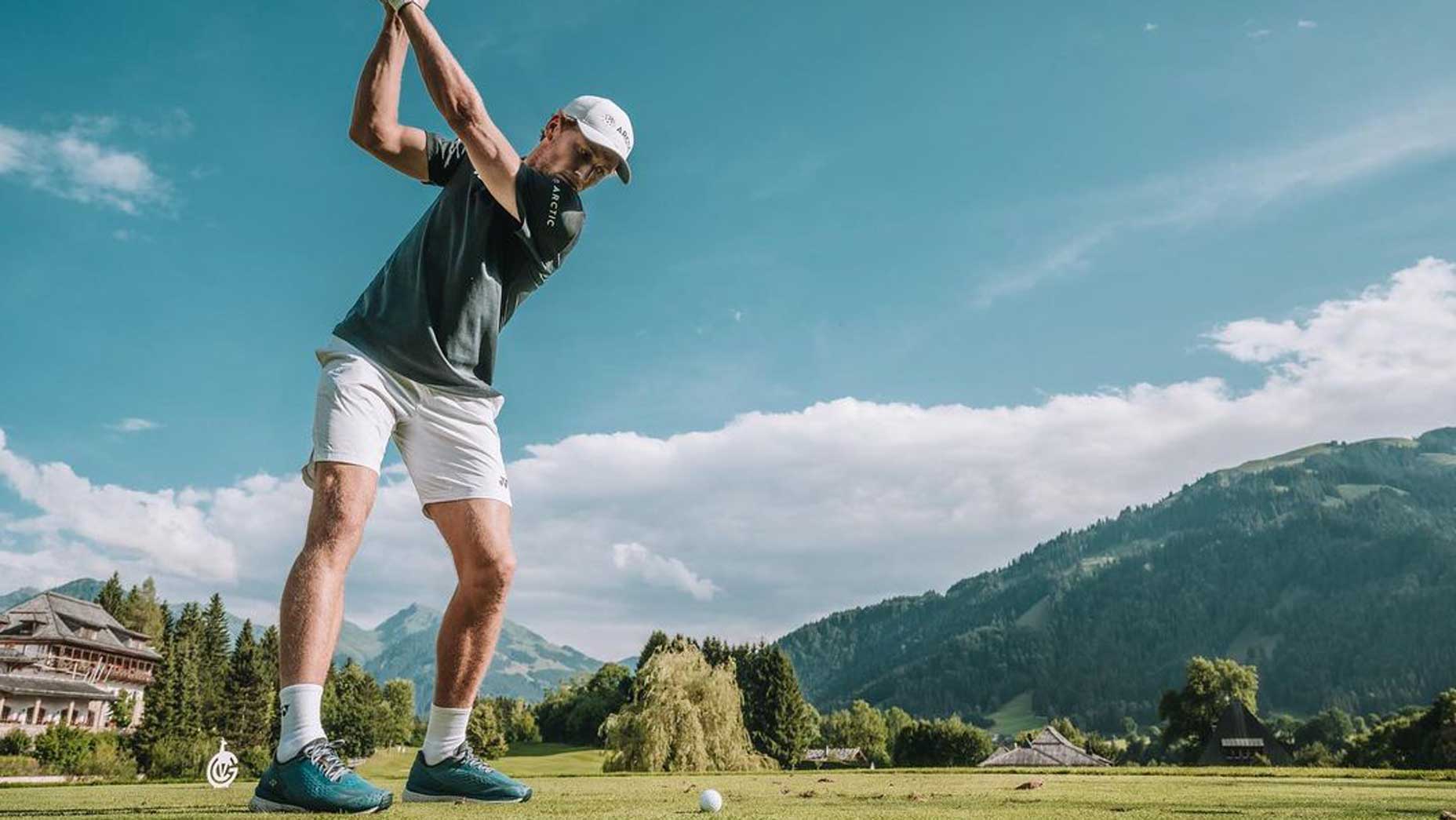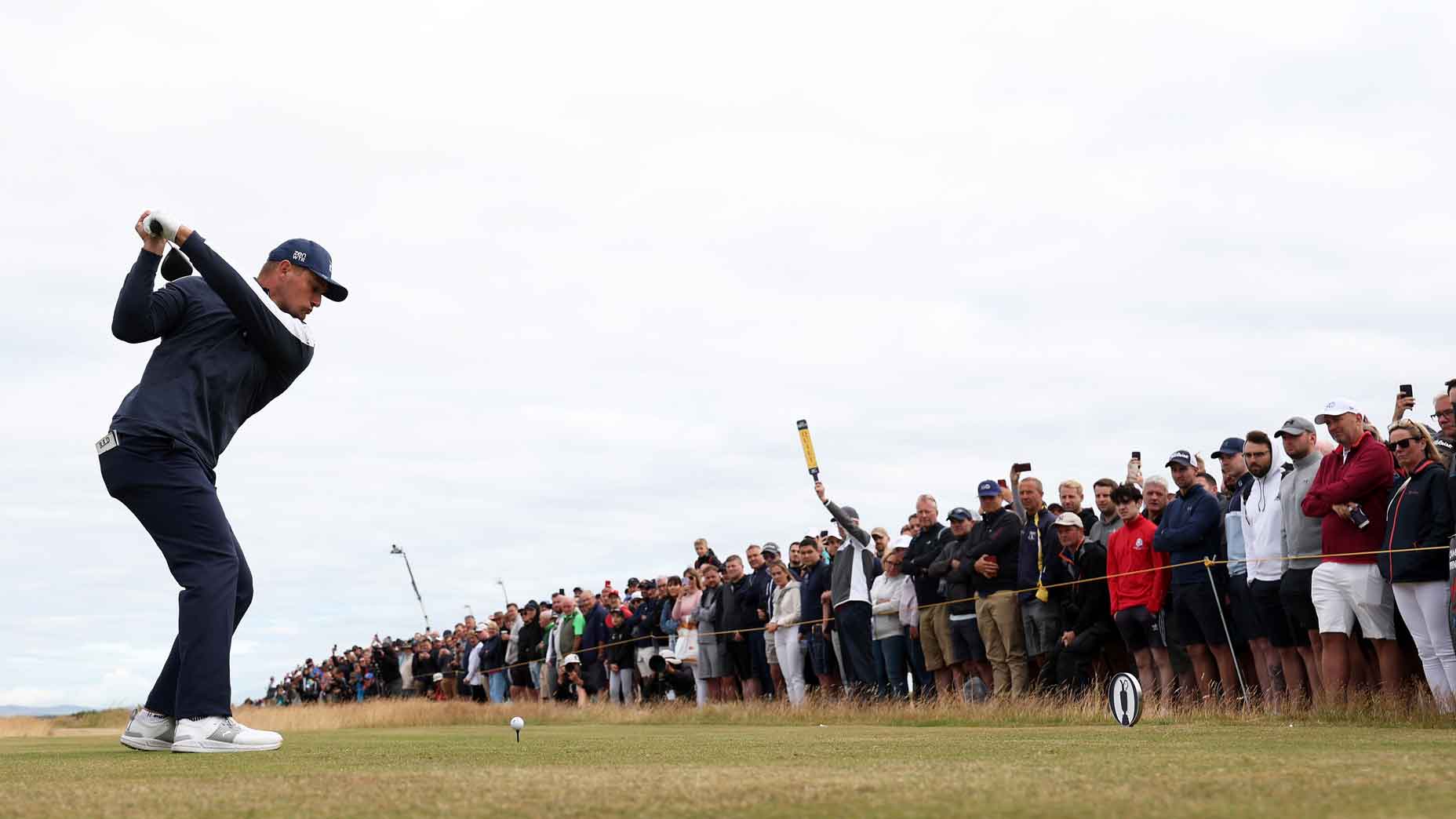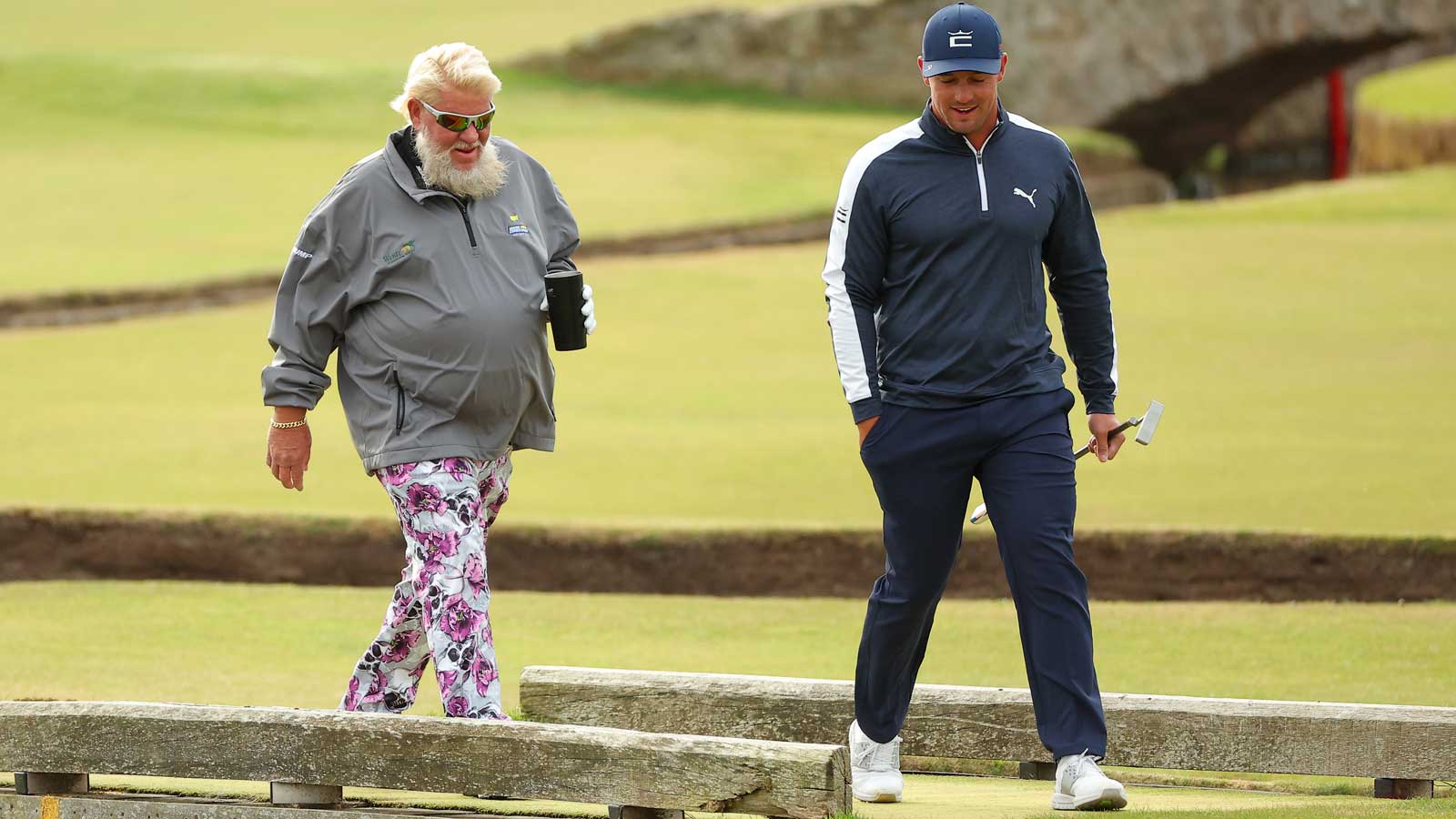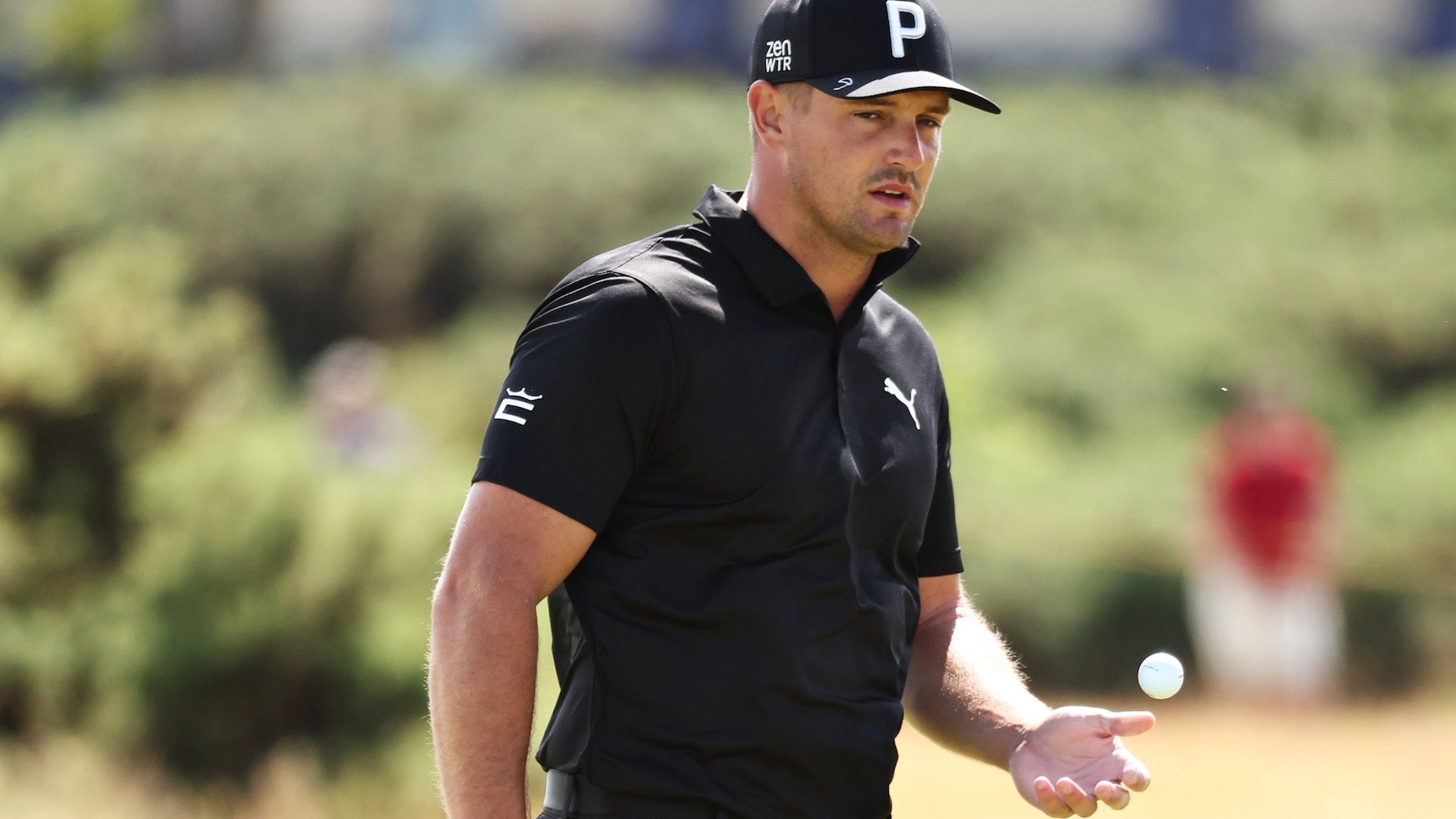What Bryson DeChambeau is searching for in his intense post-round range sessions
- Share on Facebook
- Share on Twitter
- Share by Email
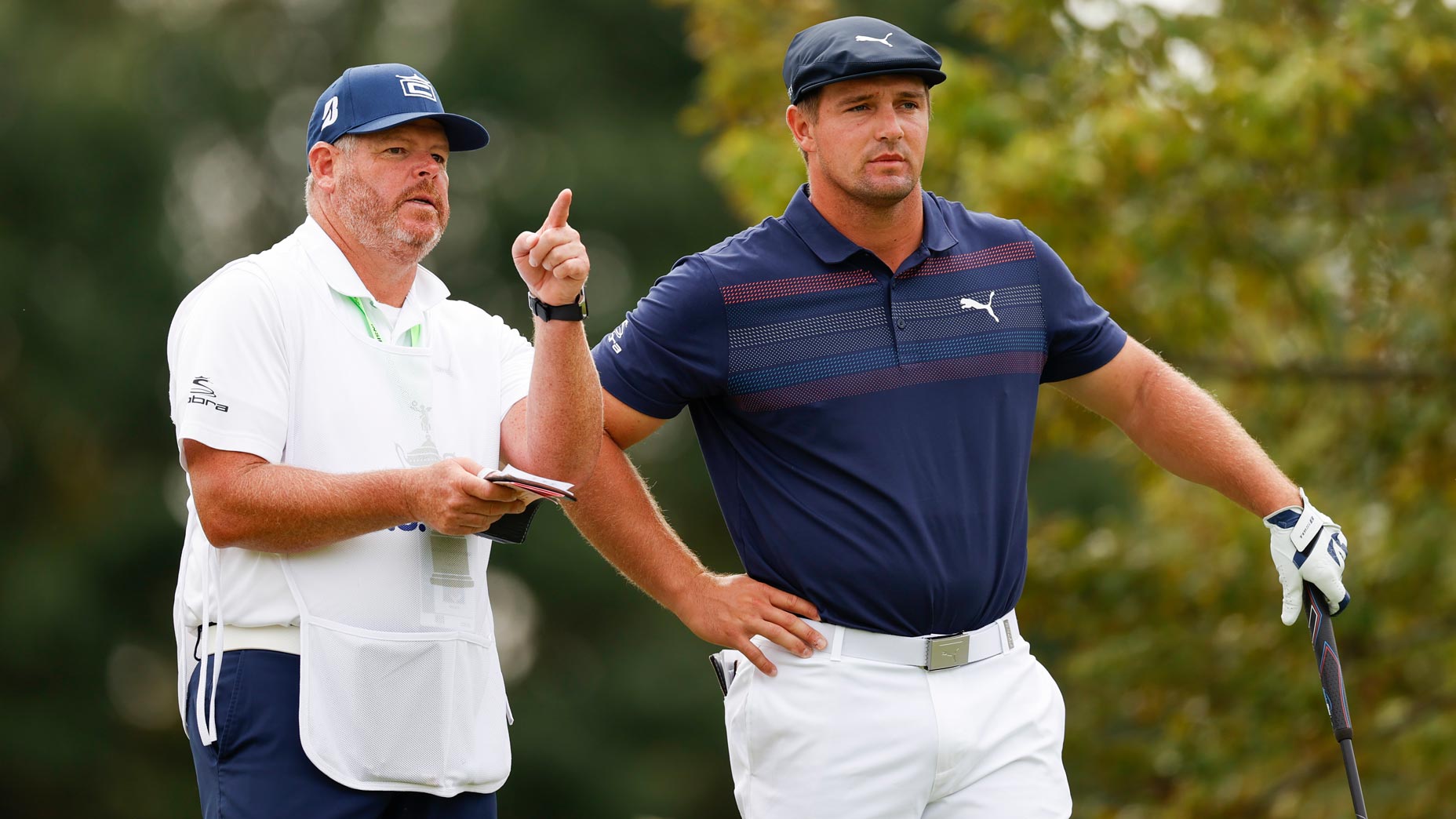
Bryson DeChambeau says he enjoys his post-round range sessions more than you might think.
USGA
MAMARONECK, N.Y. — On Friday, Bryson DeChambeau took just three shots to hole out at Winged Foot’s par-5 9th. He hit driver some 380 down the fairway. He hit pitching wedge to six feet. And he poured in the putt. DeChambeau’s walk-off eagle meant a 2-under 68, one of just two under-par rounds on Friday. It also meant he was safely in the clubhouse as conditions got distinctly worse at a U.S. Open that had suddenly developed some serious teeth.
How does Bryson DeChambeau celebrate the low round of the day? You already know: He goes to the driving range.
The ferocity of DeChambeau’s post-round range sessions have become as much a part of his image as his single-length irons or his Hogan cap. After frustrating rounds, DeChambeau’s caddie Tim Tucker knows they’ll be headed to the practice area for an intense range session. After a good round, well, yeah. Still to the practice area. Still intense.
First
— U.S. Open (@usopengolf) September 18, 2020at the 9th by @b_dechambeau to finish up his round at 3 under. #USOpen pic.twitter.com/w6kX8TDeuD
It sounds — and looks — like hard work, especially when you put as much effort into every swing as DeChambeau does, and doubly so when you’re wearied from doing battle at a U.S. Open course. As with most things, DeChambeau sees it differently that you or I would.
“No, no, no,” he said on his way to fuel up post-round Friday. “It’s a comfort thing. It’s a chance for me to go, ‘What happened on the course today? How can we make it better and what adjustments can we make for tomorrow?’
“A lot of people don’t understand; they think I’m working super hard. And I am working, but it doesn’t feel like work. It’s figuring stuff out, which is a lot of fun for me.”
Going to the range, in other words, helps DeChambeau reset, so that by the time he leaves the golf course, he feels settled. Zeroed out. Better than that, actually.
“I like to feel like I’m at another level after I hit the range,” he said. “That I’m a little bit better than when I came out.”
On Thursday, a day where DeChambeau was mystified by some of the distances he was hitting his wedges, he went to the range with a specific, active goal: get to the bottom of this confusion. He ended up shutting the place down.
Inside Bryson DeChambeau’s unique game plan for the 2020 U.S. Open at Winged FootBy: Luke Kerr-Dineen
“I was flying them too far and I wanted to know what the problem was and we figured out what the problem was: It just was going farther than I thought it was,” DeChambeau said. “We didn’t practice them as well as I should have leading up to this tournament, but we made that adjustment, and it worked out beautifully for me today.”
In other words, DeChambeau was hitting his 47 degree wedge 155 yards when he expected to hit it 145.
“I was flying everything 10 yards long,” he said. But after a vigorous range session, he and his recalibrated yardages came back Friday ready to rumble. Sixty-eight shots later, he was done with his second round and ready for another range session.
“Even if I shot 54 I would still go to the range,” he said. “Because, I mean, that’s the goal. You can never go low enough. You can always try to figure out a little bit more of an advantage.”
He’s unlikely to shoot 54 this week, but at the U.S. Open’s halfway mark, DeChambeau is delighted with just how those advantages are adding up. He’s been hitting driver nearly everywhere, as he planned to entering the week. As a result, even when he’s missed the fairway he’s been able to hit wedge on holes that other players are hitting mid to long irons.
“I feel like I can get it to the front edge or middle of the green, where other guys are trying to hit it out to the fairway,” he said. “That’s my where my advantage comes from. And if I keep hitting it farther and straighter, that’s my advantage.”
The straight is important; he made sure to emphasize that. Scrambling is crucial, too — DeChambeau said that Phil Mickelson emphasized just how good his short game was in his near-win at Winged Foot in 2006.
So far, whatever combination he’s using is working. After his round, conditions only seemed to be getting more difficult, and there was a good chance that DeChambeau would end up in the lead by the end of the day. DeChambeau said he would tune in for some of the afternoon action.
“Oh yeah, I’ll definitely see how it’s playing. I’ll watch some coverage just to try to get ready for tomorrow, to get ready for the conditions and the way it’ll play in the afternoon.”
As DeChambeau walked away, someone pointed out that given the conditions, he could be in the lead by the end of the day. He smiled.
“Oh, yeah,” he said. “Definitely.”
But first, to the range.
Latest In News

Dylan Dethier
Golf.com Editor
Dylan Dethier is a senior writer for GOLF Magazine/GOLF.com. The Williamstown, Mass. native joined GOLF in 2017 after two years scuffling on the mini-tours. Dethier is a graduate of Williams College, where he majored in English, and he’s the author of 18 in America, which details the year he spent as an 18-year-old living from his car and playing a round of golf in every state.

